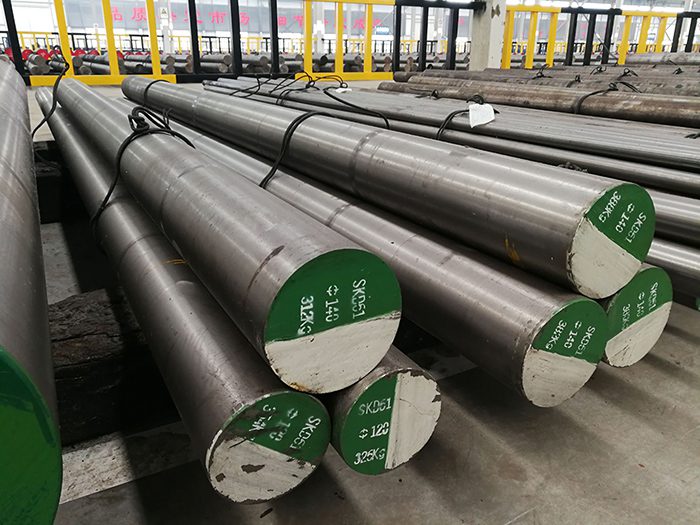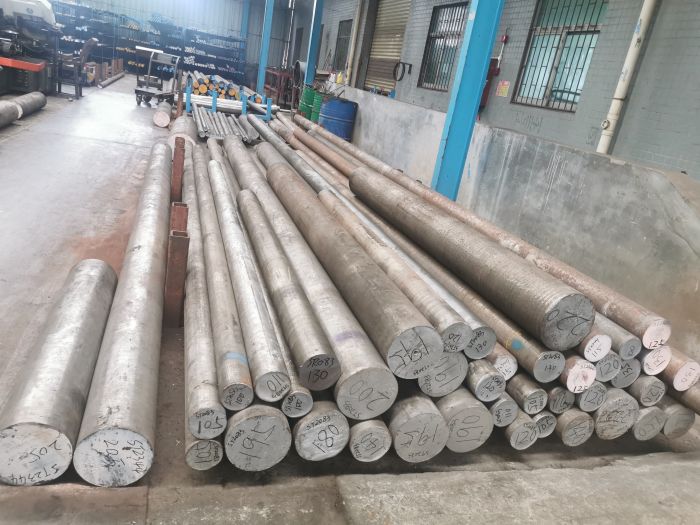Alloy steels are engineered to possess specific properties tailored for diverse industrial applications. One attribute that often comes under scrutiny is magnetism – a critical characteristic in fields ranging from engineering to electronics. Understanding the magnetic properties of alloy steel is essential for professionals who design, manufacture, or utilize these materials in their work. This article aims to clarify the conditions under which alloy steel can exhibit magnetism and shed light on the underlying principles that govern its magnetic behavior.
Is Alloy Steel Magnetic?
The magnetic properties of alloy steel are primarily due to the presence of iron, which is inherently magnetic. In general, alloy steels will exhibit varying degrees of magnetism depending on their composition and microstructural state.
Whether or not an alloy steel is magnetic can be influenced by factors like the heat treatment it has undergone or the proportions of alloying elements present. For example, adding non-magnetic elements such as nickel or chromium in significant enough quantities can alter the ferromagnetic properties of steel and reduce its magnetism. On the other hand, a high concentration of iron promotes magnetism.
Certain specific types of alloy steels known for strong magnetic properties include silicon steels and nickel-iron alloys, often used in electrical applications due to their favorable magnetic permeability. Steels that have been cold-worked or stressed may also display enhanced magnetic characteristics due to changes in their crystal structures at the atomic level.
What Makes Alloy Steel Magnetic?
The intrinsic magnetic properties of alloy steel are fundamentally derived from its microstructural composition, specifically the arrangement and interaction of its constituent atoms. Iron, the primary component in steel alloys, exhibits ferromagnetic characteristics, which accounts for the magnetism in alloy steels.
Each atom act as a tiny magnet with a spin magnetic moment due to the electrons’ angular momentum and spin. When majority of these atomic magnets align in the same direction within a domain, they contribute to the ferromagnetism exhibited by materials like iron, cobalt, and nickel.
When alloying elements are added to iron to create different types of steel, their influence on these atomic spins can either enhance or diminish the overall magnetic properties. The presence of nonmagnetic elements like chromium or aluminum can dilute and affect alignment of magnetic domains while carbon, typically found in small amounts in steel, enters interstitial sites that can distort the lattice structure leading to interactions that favor domain alignment under external magnetic fields.
Furthermore, heat treatments can alter the physical structure and thereby change how electrons are arranged within an alloy steel’s crystal lattice. Aspects such as grain size refinement due to quenching and tempering can have direct repercussions on how domains align under magnetizing forces.
Characteristics such as crystallographic texture also play a role; certain orientations of crystals within polycrystalline structures may facilitate easier domain wall movement enhancing material’s ferromagnetism. Consequently, whether or not an alloy steel is magnetic ultimately depends upon its specific elemental composition and microstructural configuration after processing.

How Different Alloying Elements Can Affect Magnetic Properties
Alloy steels are primarily composed of iron, a naturally magnetic material. However, the magnetic properties of alloy steel can be altered significantly by the addition and concentration of various alloying elements. These alterations can influence both the strength and nature of alloy steel’s magnetic characteristics.
| Alloying Element | Effect on Magnetism |
|---|---|
| Chromium (Cr) | Adds corrosion resistance but can decrease magnetism when added in high amounts due to the formation of non-magnetic chromium oxide layers |
| Nickel (Ni) | In small quantities, can enhance magnetic properties, but larger amounts lead to austenitic structures that are essentially non-magnetic |
| Manganese (Mn) | Contributes to an austenitic structure and higher manganese content leads to lower magnetic permeability |
| Silicon (Si) | Usually degrades magnetism as it encourages the formation of silicon oxide insulating films which impede domain wall movement |
| Aluminum (Al) | Can reduce magnetism due to its influence on crystal structure that may hinder domain alignment |
| Cobalt (Co) | Enhances magnetism since it stabilizes the magnetic phase and increases coercivity |
Which Types of Alloy Steel are Magnetic?
The magnetism in alloy steel is primarily determined by its composition, the microstructure after heat treatment, and the presence of certain elements such as iron. There are several types of alloy steels that exhibit different degrees of magnetism based on these factors. Generally, alloy steels can be categorized into two groups: ferromagnetic and non-ferromagnetic.
| Type of Alloy Steel | Characteristics |
|---|---|
| Ferromagnetic Alloy Steels | These contain iron, nickel, cobalt, or some rare earth elements which have a strong attraction to magnetic fields. They can become permanently magnetized. Examples include martensitic stainless steels like 420 and 440C, and low-alloy carbon steels. |
| Non-Ferromagnetic Alloy Steels | This group includes austenitic stainless steels like 304 and 316 which typically contain high amounts of chromium and nickel with only trace amounts of iron. Although they may show some magnetic response when cold-worked or welded, in general, they do not retain magnetic properties as strongly as ferromagnetic alloys do. |
Magnetism in ferromagnetic alloy steels arises from the alignment of electrons within their crystal structure creating magnetic domains; when an external magnetic field is introduced, these domains align uniformly resulting in attractive forces.
Non-ferromagnetic alloy steels generally have a more random electron alignment due to their crystalline structure or because the elements’ atoms do not naturally align magnetically. Consequently, any magnetism displayed by these alloys tends to be very weak and temporary.

Factors Influencing the Magnetism of Alloy Steel
The magnetism of alloy steel is subject to several critical factors that together determine its magnetic properties. These factors are intrinsic to the material’s metallurgical characteristics and include:
- Composition of Alloying Elements: The type of elements and their concentration in the alloy significantly influence its magnetic capabilities. For instance, iron is inherently magnetic, and steels with higher iron content will generally exhibit stronger magnetic properties.
- Heat Treatment: The thermal history of an alloy plays a significant role. Different heat treatments can alter the crystal structure and thus affect the magnetic permeability of the steel. Such treatments may involve annealing, quenching, tempering, or a combination thereof.
- Mechanical Stress: Applied stresses, whether from manufacturing processes or in-service use, can induce changes in magnetic properties by affecting grain orientation and size within the steel.
- Working Temperature: As temperature increases, most ferromagnetic materials will eventually reach a point known as the Curie temperature where they lose their magnetic properties entirely. Below this temperature, small changes can either enhance or reduce magnetism.
- Degree of Cold Work: Deformation processes such as rolling or forging can align the grains in a way that affects how easily magnetic domains can move, thus altering the steel’s magnetization behavior.
- Presence of Precipitates or Inclusions: Non-metallic inclusions or precipitates distributed throughout an alloy can act as pinning sites for domain walls and affect how readily the material becomes magnetized.
Applications of Magnetic Alloy Steel
| Industry/Application | Use of Magnetic Alloy Steel |
|---|---|
| Electric Motors and Generators | Manufacture of permanent magnets for improved efficiency |
| Electronics | Transformer cores for enhanced energy transfer and minimal loss |
| Automotive | Sensors and actuators for vehicle safety systems |
| Recording Media | Data retention in certain types of recording media |
| Construction | Magnetic circuit breakers for overload protection |
| Aerospace | Navigation systems, jet engine components |
| Medical Technology | MRI machines for efficient electromagnetic field conduction |
| Security Systems | Locks, safes, and anti-theft tags for resistance against tampering |
In conclusion
In conclusion, the magnetic properties of alloy steel are dependent on the specific composition and microstructure of the material. Understanding whether a particular alloy steel will exhibit magnetic properties is essential for applications where magnetism plays a critical role. We have touched on key factors that influence the ferromagnetic nature of various steels and how this can be tailored for specific industrial uses.
For a more thorough insight into alloy steels and their magnetic characteristics, as well as professional guidance in selecting the perfect material for your needs, we encourage you to visit our comprehensive website or reach out to us directly. Our team of experts is ready to provide you with personalized solutions that cater to your unique requirements. Whether you’re looking to source high-quality magnetic alloy steels or seeking advice on materials engineering, we are here to ensure your success. Connect with us today—let’s forge a powerful future together.

